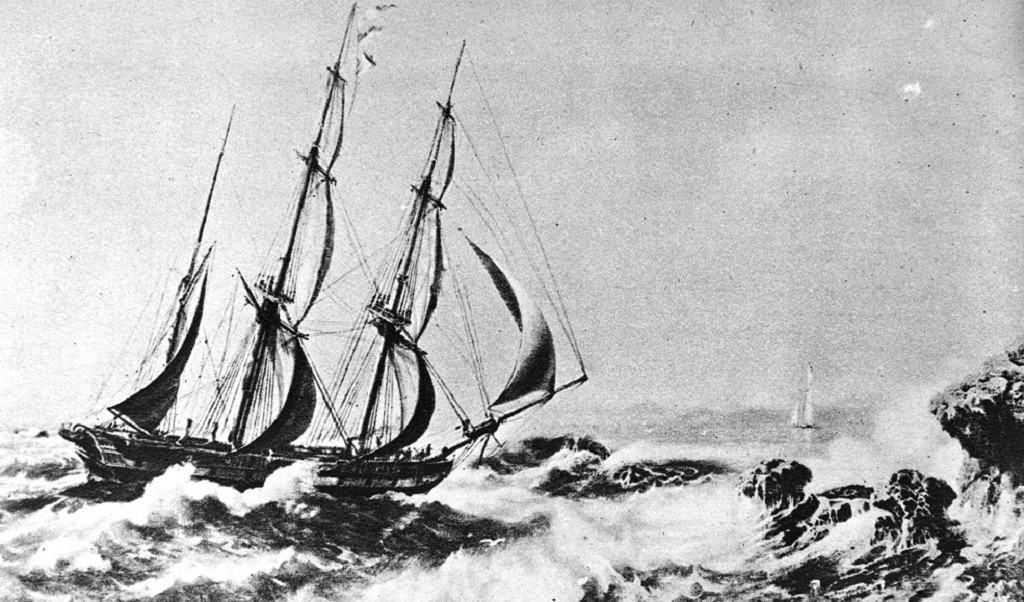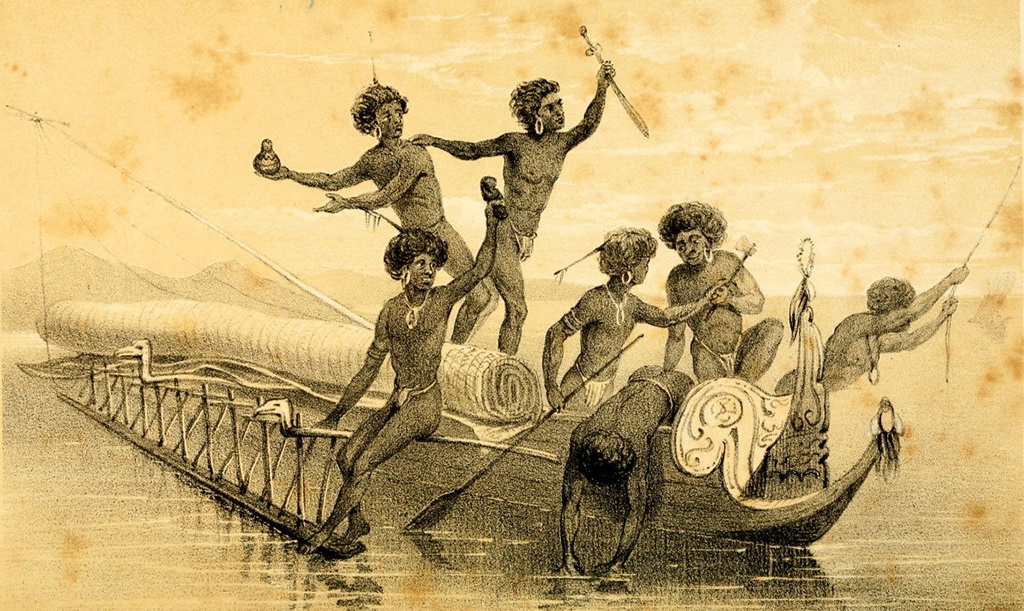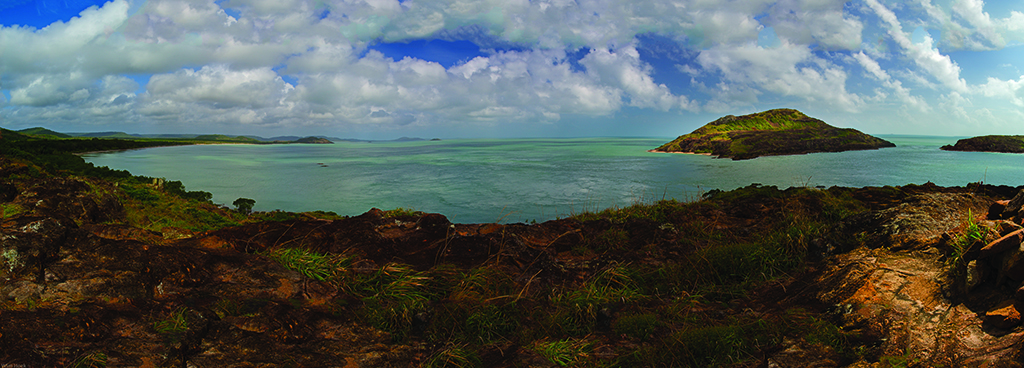
The Scot who was a real-life Robinson Crusoe
The tale of Robinson Crusoe is a familiar one, but less well known is the story of a young Scottish girl who, 170 years ago, survived just such an ordeal herself.
On 16 October 1849, a party of sailors from naval ship HMS Rattlesnake, commanded by Captain Owen Stanley, went ashore at Cape York, Queensland, on Australia’s far north-eastern tip. The crew was part of a surveying mission charged with finding a safe route around the top of Australia, through the Torres Strait.
HMS Rattlesnake had anchored at a spot many ships had passed by before. Several crew members went in search of water. Landing on the beach, they passed an Aboriginal woman without paying her much attention. However, they turned back when she called to them: ‘I am a white woman, why do you leave me?’
Not only did the woman speak English, she had a pronounced Scottish brogue.
The ‘startling incident’ was recorded by the ship’s naturalist, 26-year-old John MacGillivray, whose job it was to document flora and fauna. (His record of events, Narrative of the Voyage of HMS Rattlesnake, was published in 1852.)
You can imagine the young Scotsman’s surprise at coming across a woman who ‘wore no clothing with the exception of a narrow fringe of leaves in front, her skin tanned and blistered with the sun,’ and who was not only British, but turned out to be from Aberdeen, the same part of Scotland as MacGillivray.
The castaway, Barbara Crawford Thompson, was a 21-year-old woman who, five years previously in 1844, had been the sole survivor of a shipwreck near Prince of Wales Island, off Cape York, while sailing with her husband in a cutter. The vessel is believed to have struck a reef near Muralug Island during a gale.

HMS Rattlesnake (Photo: State Library of Victoria)
After the gale subsided, a party of indigenous Kaurareg islanders hunting for turtle in canoes found her clinging to the wreckage. The islanders rescued her and took her to Muralug where one man, Boroto, claimed her as his share of the plunder.
As MacGillivray later wrote in his diary: ‘She was compelled to live with him, but was well treated by all the men, although many of the women, jealous of the attention shown her, for a long time evinced anything but kindness.’
There is another possible explanation as to why the hunting party spared the young stranger’s life.
Not long before the shipwreck, the leader of the tribe, Chief Peaquee, had lost his daughter Gioma in a drowning accident. It would appear that Thompson had similar features to the young Aboriginal girl and tribal members believed she had returned from the dead. Thompson was given the same name as the dead girl and became known as Gioma.
Although unused to contact with outsiders, the tribe took Thompson in, treating her as one of their own. But she was also watched closely. Used to seeing ships passing by only a couple of miles away, the young castaway must have assumed that any chance of escape would never come. But once she saw the Rattlesnake moor in a mainland bay, she persuaded some Aboriginal friends to take her towards the ship.
The belief would seem to have been that she had been with the tribe for so long, that she had no intention of leaving them.
‘They were credulous enough to believe that as she had been so long with them, and had been so well treated, she did not intend to leave them – only that she felt a strong desire to see the white people once more and shake hands with them, and procure some axes, knives, tobacco, and other much prized articles,’ wrote MacGillivray.
‘After landing at the sandy bay on the western side of Cape York, she hurried across to Evans Bay, as quickly as her lameness would allow; and well it was that she did so, as a small party of [Aboriginal] men followed to detain her, but arrived too late.’

A group of Aboriginal Australians, depicted in a picture of the time
Three of the Aboriginal party – those who had originally saved her from the shipwreck – were allowed on board at Thompson’s request, where they were presented with an axe each and other presents.
But, although Thompson had successfully freed herself, would she really want to leave? She had been part of an Aboriginal family for years, living their way of life. Perhaps it wasn’t so hard to imagine that she might choose to remain with them.
The British officers didn’t know what to think. Not hearing her speak immediately, the possibility dawned upon MacGillivray and the others that this young Scots woman – marooned for so long and used to conversing in a new language – might well have forgotten how to speak English.
‘Asked by Captain Stanley whether she preferred remaining with us to accompanying the natives back, she was so agitated, making use of scraps of English with Kowrarega language, and then, not understood, the poor creature blushed all over, and beat her forehead with her hand, as if to assist in collecting her thoughts,’ MacGillivray wrote.
‘At length she found words: “Sir, I am a Christian and would rather go back to my own friends”.’
Boroto, who had initially claimed the young castaway, was allowed on board to see her, bearing gifts of fish and turtle. However, after a failed attempt to induce her to go back with him, he left the ship in a rage and threatened that ‘should he ever catch his faithless wife on shore, they would take off her head’. Thompson took the threat sufficiently seriously that she did not leave the boat again.

A panorama of the tip at Cape York
Thompson was able to provide MacGillivray with information on the Kaurareg customs, beliefs and language, and her account of relations between the Islanders and the mainland Aboriginal people was of great interest to the naturalist.
HMS Rattlesnake arrived back in England in 1850. In 1864, MacGillivray, whose father had been an ornithologist and professor of natural history at Marischal College, Aberdeen, emigrated to Australia where, on 6 June 1867, he died of a heart attack at the age of just 45.
It is thought Barbara Crawford had moved to Australia with her parents and seven siblings around 1837, and was hired out as a domestic servant in 1843 along with her two older sisters, Mary and Ann, before marrying William Thompson. After her rescue, she returned to mainland Australia, remarried, and died in 1916, aged 85.
Much of MacGillivray’s extensive collection of birds, shells and plants can still be seen in places such as the British Museum and Kew’s Herbarium. But it would seem safe to say that nothing he found washed up on Australian shores would be anywhere near as surprising as his discovery of the young Scots castaway, Barbara Crawford Thompson, all those years ago.
This feature was originally published in 2016.
TAGS

